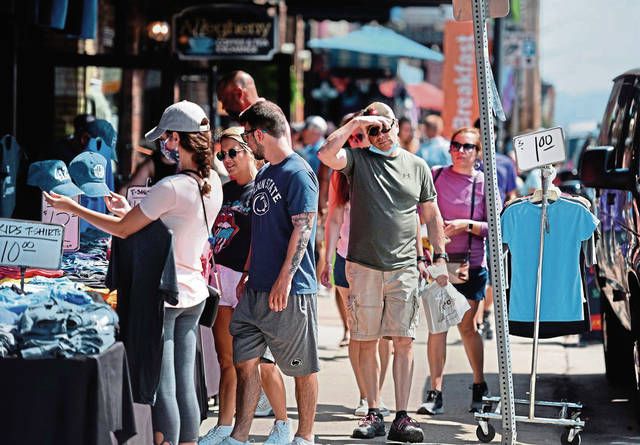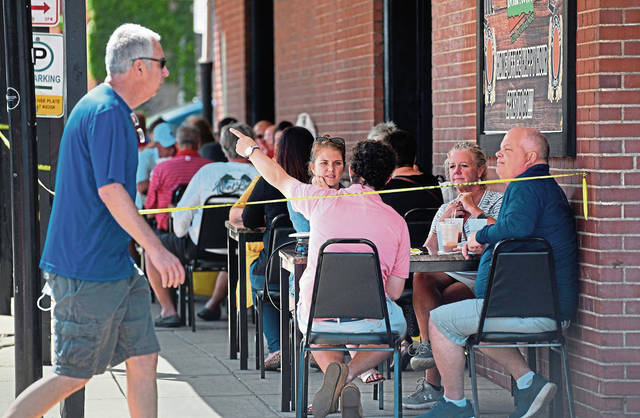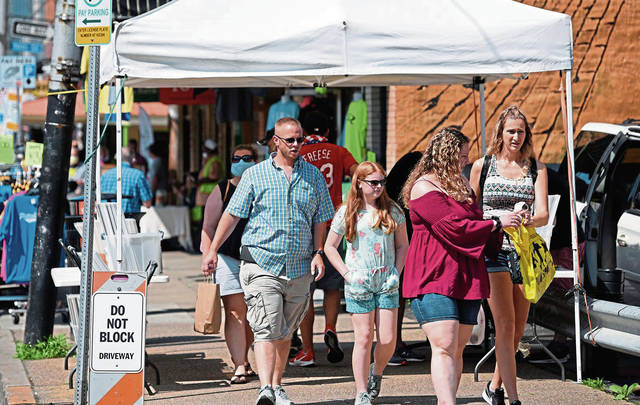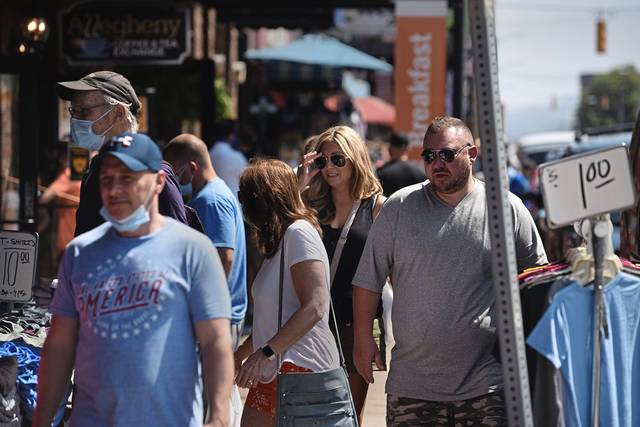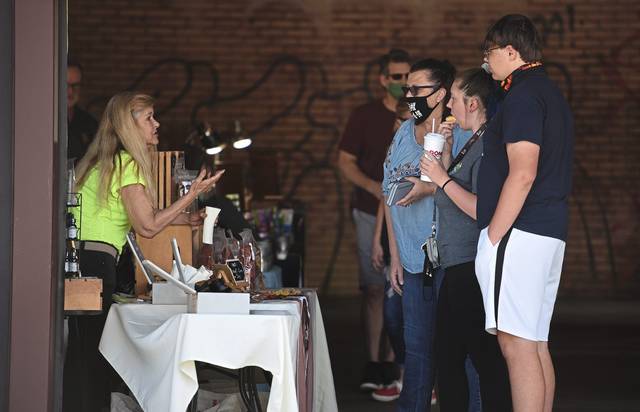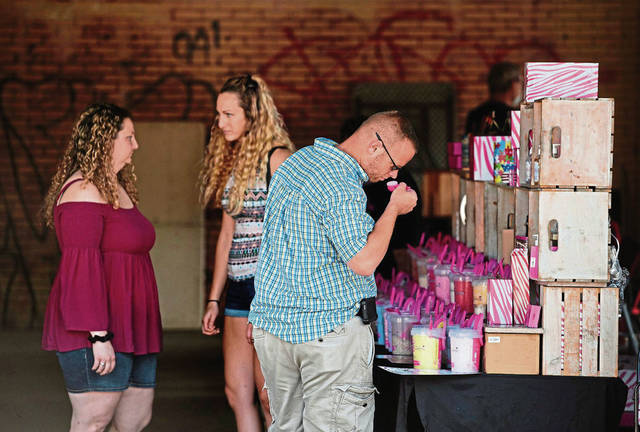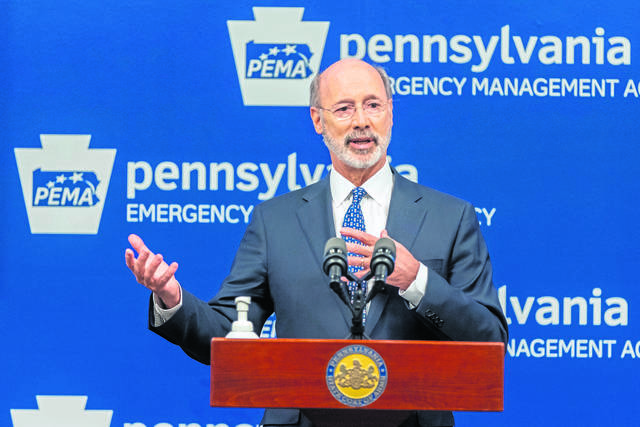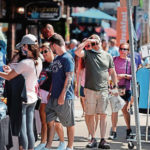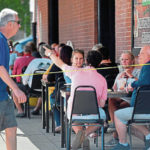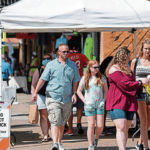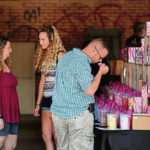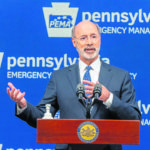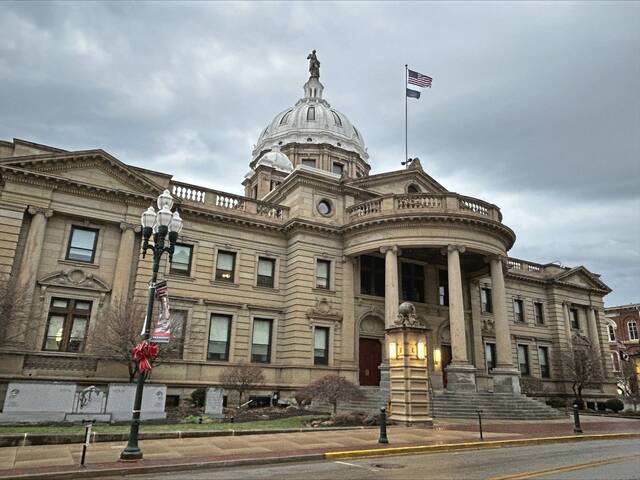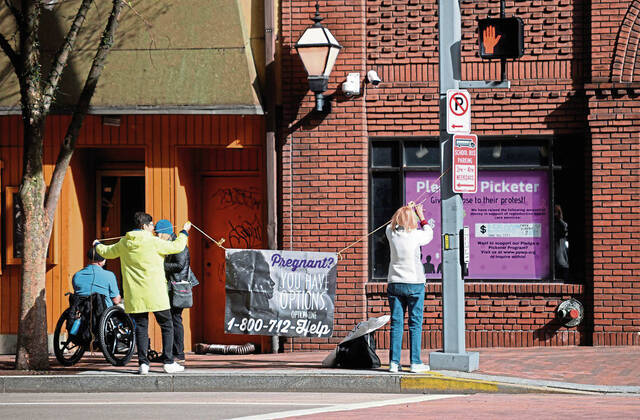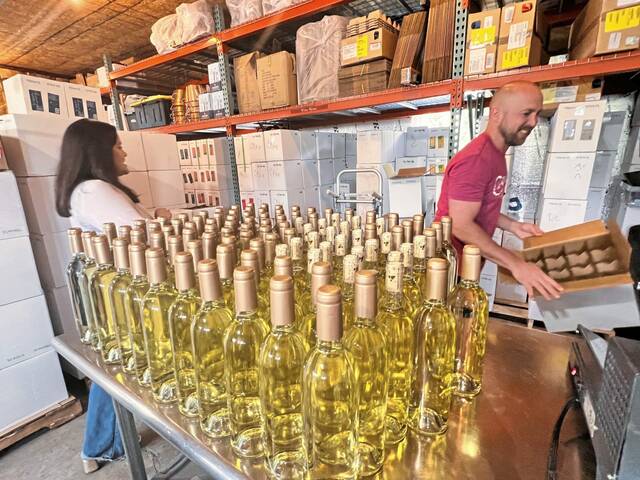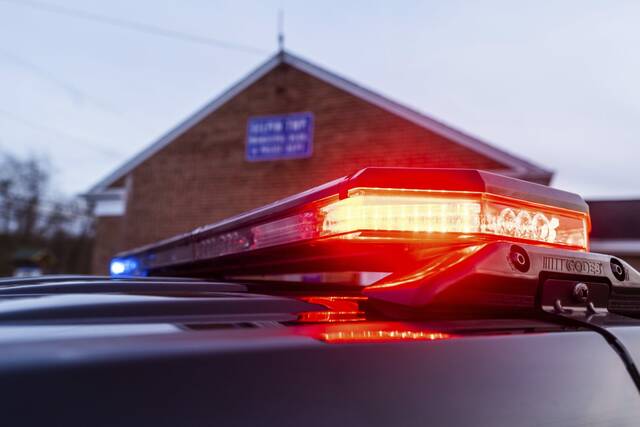It’s almost inevitable that the gradual reopening of Pennsylvania will lead to more coronavirus cases, but state officials and health experts are hopeful it won’t create a surge like those under way in other parts of the country.
“Any amount of social interaction, any opening is going to give you more cases, that’s not the question,” said Pittsburgh-based Dr. Amesh Adalja, a fellow of the Infectious Diseases Society of America.
The question is whether those cases will overwhelm health care facilities. That seems unlikely as long as Pennsylvania maintains its current course, Adalja said.
Southwestern Pennsylvania, so far, has escaped the worst of the virus.
“The number of cases has been very, very small and manageable,” he said. “We’re not hearing about any kind of stress from any of the hospitals.”
Pennsylvania’s reported daily coronavirus cases peaked in early April and have been declining since.
The virus, however, is spiking in other parts of the country. Arizona, Florida and Texas all reported their largest one-day increases last week, with more than 2,000 cases each, The New York Times reported.
Pennsylvania locked down harder and opened more slowly than some other states, Adalja said.
“In general, Pennsylvania has a very conservative approach to reopening, much later than other places and much more measured,” he said.
Many businesses have reopened. All 67 Pennsylvania counties are in the green or yellow phase of Gov. Tom Wolf’s three-tiered reopening plan. Case counts have remained low despite the reduced restrictions, according to the state Department of Health.
Comparing the state’s declining case count to those of other states, Wolf called Pennsylvania’s approach a success.
Pennsylvania’s measured, phased process to reopen has been successful.
— Governor Tom Wolf (@GovernorTomWolf) June 15, 2020
We’ve relied on science and health experts and asked everyone to do something simple: Wear a mask when you go out in public.
We'll continue to move forward cautiously.
Source: https://t.co/rn0DCnr2Fn pic.twitter.com/bC3OFcVORW
“Because we took quick, decisive action, we never actually reached the sky-high rates that several other states have reached,” Wolf said last week.
Pennsylvania is one of only three states to see a steady decline in coronavirus cases for more than 42 days, Wolf said, citing the Centers for Disease Control and Prevention.
“Now, we have the data and we know that our science-based approach has made Pennsylvania one of the leading states in responding to the coronavirus pandemic,” Wolf said. “Our new case rate is about a quarter of what it was at the peak.”
For more than 42 days, #COVID19 cases in Pennsylvania have been on a downward trajectory.
— Governor Tom Wolf (@GovernorTomWolf) June 16, 2020
This is a huge accomplishment. And it's all thanks to the tremendous sacrifices made by Pennsylvanians in the last few months.
Source: @CDCgov June 10 analysis of state data pic.twitter.com/ZmHjpoOjRK
However, it’s dangerous to assume the threat of coronavirus is over, according to infectious disease expert Vaughn Cooper.
“What we’re seeing happening in several other states is definitely possible here,” said Cooper, director of the Center for Evolutionary Biology and Medicine at the University of Pittsburgh.
He credits the relatively low number of cases in Pennsylvania to officials and individuals taking the virus seriously. Shedding masks and ignoring social distancing could invite it back.
“We are all susceptible,” he said. “The virus didn’t go away, and all the behaviors that would have promoted transmission in March would still promote transmission here.”
Masks mandatory
Wolf last week reminded Pennsylvanians that masks are required to enter any business, even in counties in the green phase.
“Masks are considered critical in stopping the spread of covid, now and in preparation for a possible resurgence of the virus in the fall,” the governor said.
Mask requirements and limits on mass gatherings will remain the “new normal” for the foreseeable future, Pennsylvania Health Secretary Rachel Levine said.
Outside the Westmoreland County Courthouse last week, dozens of people sat around the plaza, walked the sidewalks or congregated outside downtown Greensburg restaurants. A rare few wore masks.
The same was true inside the courthouse, where masks were few and far between. No one publicly visible in the clerk of courts or elections offices wore masks. Neither did park police officers working security at the main entrance.
Masks are not required in the courthouse generally, although each elected official can require them in the office — and some have. County commissioners said masks are recommended, and judges require the public to wear masks in courtrooms.
Those with masks quickly removed them as they left the courthouse to walk or congregate outside.
Suzanne Pierce, an employee at the Sun Dawg Café, has a view of the courthouse courtyard.
She and her co-workers said people normally walk into the café with masks on and then take them off upon entry.
“It’s gradually getting back to normal,” Pierce said. “I’m hoping this continues to stay a trend.”
George Thimons, owner of Community Supermarket in Natrona Heights, requires customers to wear masks. A sign at the door reminds them of the rule.
“We want to keep our employees safe and keep our customers safe,” Thimons said.
Everyone entering the store last week complied with some kind of face covering, ranging from bandanas to medical-grade masks.
Mary Lou Wilson of Tarentum wore one inside the grocery store “for other people’s protection,” she said. “I don’t want to make anybody sick, and I don’t want to breathe in anybody else’s germs.”
Giant Eagle also requires masks.
Of 50 people who were observed entering the Giant Eagle in New Kensington one day last week, 48 wore a face covering.
At the Walmart in Natrona Heights, 36 out of 50 people observed wore a mask.
Lil Blandford was one of those who entered barefaced.
“I don’t want to [wear a mask],” she said. “They bother me. I can’t breathe good.”
Another Walmart shopper, Gene Strazzer, said he doesn’t believe the masks are important, but wore one anyway.
“I don’t want to upset anybody,” he said.
There is a presumption that people with covid-19 are out in public, said Doug Reed, an associate professor of immunology at Pitt’s Center for Vaccine Research. He advocates wearing masks, particularly in crowded indoor settings.
“The primary concern right now is that we don’t know who might have the disease. Symptomatic people, that’s fairly easy to see,” Reed said. “But we know there are people who may not yet be symptomatic and might not ever be symptomatic.”
Wearing a mask can prevent those asymptomatic carriers from spreading the virus, Reed said.
Reed acknowledged that most people aren’t wearing medical-grade masks, which means they’re not a perfect solution. But coupled with social distancing, they can be effective, he said.
“The mask alone isn’t sufficient. The social distancing by itself isn’t sufficient. The two combined work together to make the situation better,” he explained.
Studies show impact
Wolf cited a recent study from the United Kingdom that found that cloth masks, “even homemade masks with limited effectiveness can dramatically reduce transmission rates if worn by enough people, regardless of whether they show symptoms.”
A recent study by researchers at Texas A&M University found face coverings have helped reduce the spread of infections. Masks prevented more than 66,000 coronavirus cases in New York City in less than a month, according to the study.
Most people continue to abide by health guidelines, but Cooper said he has noticed more people ignoring them recently.
“I’ve seen some behaviors that are certainly good for the virus and bad for public health,” he said.
State health department spokesman Nate Wardle said the state is monitoring coronavirus case counts and will react accordingly if there is a major outbreak.
“Our hope is that counties will not need to move from a less-restricted phase to one with more restrictions, but the department is prepared to protect the public health of Pennsylvanians,” he said.
He did not provide details about what the threshold would be for additional restrictions or what those restrictions would look like.
The threat of coronavirus will not disappear until a vaccine is widely available, Adalja said. However, restrictions and health guidelines could change as more is learned about the virus and the best way to prevent it. For example, some research suggests that face shields are more effective than homemade masks, so face shields might become more prevalent in upcoming months, he said.
It will be up to individuals to protect their own health and those of their neighbors, and to decide what kind of health risks they’re comfortable with, he said.
“A lot of this is going to fall to individuals to decide what activities are important for them,” Adalja said.
Staff writers Julia Felton, Megan Swift, Renatta Signorini and Rich Cholodofsky contributed to this report.


